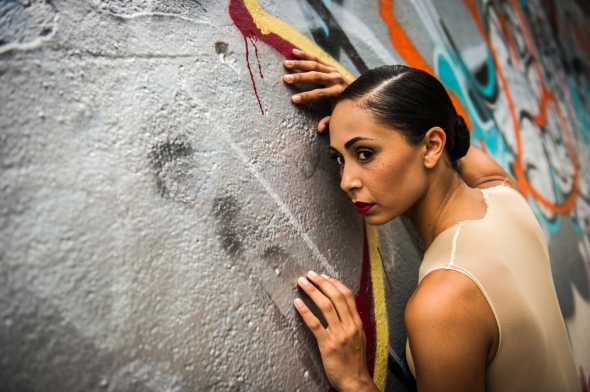Instituto Coreográfico 2017: Q&A with Carlos Pons Guerra, Part 1
Posted: October 5, 2017 Filed under: Behind-the-Scenes @ BH, Dancers, Instituto Coreografico, Performances | Tags: Ballet Hispanico, Carlos Pons Guerra, choreographer, dance, Instituto Coreografico Leave a commentFor the latest installment of Instituto Coreográfico, Ballet Hispanico’s choreography lab for Latino artists, we welcome Spanish choreographer Carlos Pons Guerra to our studios to work with our dancers. We caught up with him recently for a reflection on his experience, which will culminate tonight in a public showing. Here’s Part 1 of what he had to say on this collaborative process:

Carlos in process with the dancers. (c) Johan Rivera
What has your approach been for working with the Ballet Hispánico dancers?
We have been having a great and productive time in the studio with Ballet Hispánico! It has been a very interesting dialogue. For the first couple of days, I taught the dancers sequences of my movement, sequences that to me represented the raw essence of the piece. That way they also got to know me a little. I then would give the dancers assignments to do with my movement, which I call ‘dramatic tasks’ as they have a certain sense of narrative. For instance, in couples, I asked them to perform my sequence but that any moment, one of their body parts had to totally give up dancing–so we created duets that had an idea of giving up, of abandon, but also of support. It’s a really interesting two-way approach, where I give information and the dancers constantly feed back. We have also spent time researching telenovelas together–Latino soap operas have really influenced the aesthetic of the piece–and exchanging observations on the heightened sense of drama and performance you find in them.
“Being here now, and being able to explore my Hispanic themes with dancers who are so committed to them, who get you from the start, and who can really enrich your exploration through their own heritage and cultural experiences–wow, it’s super special.”
Before you got to meet them, what was your perception of the Ballet Hispánico Company?
I first saw Ballet Hispánico at the International Ballet Festival of Havana in 2014. I fell in love then, and that hasn’t changed–except perhaps that I am more full of #BHamor than ever! My perception then was that they were beautiful dancers with great skill, technique, and articulate bodies, but above that, a very honest and explosive sense of projection and presence. Another thing that really struck me was their commitment and passion to exploring and celebrating Latino culture, which is the main thing that made me start choreographing six years ago. So being here now, and being able to explore my Hispanic themes with dancers who are so committed to them, who get you from the start, and who can really enrich your exploration through their own heritage and cultural experiences–wow, it’s super special.
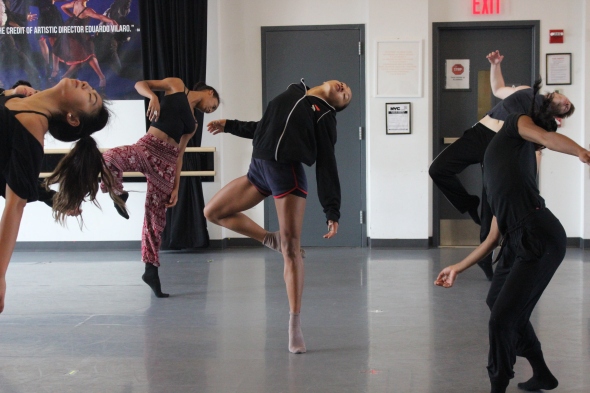
L to R: Shelby Colona, Gabrielle Sprauve, Jenna Marie, Nick Fearon, Dandara Veiga (c) Johan Rivera
Is there anything that has surprised you so far about the process, about our dancers, or just the experience in general?
Something really surprising for me, and which is really driving the process, is this love and need to dance. It may sound funny as I work only in dance, but in some other contexts, I have sensed a certain kind of lethargy. But Ballet Hispánico dancers need to move, and they do it beautifully and with such energy and speed. It’s contagious and it makes my job happen much faster and with drive. I’m very happy because the work is developing into something very dynamic and it feels very alive.
A key element is the drama. My work is generally a bit comical, very physical but also heavily character based. The dancers have a lot of personality and are very generous in offering it to the choreography—they’ve understood me really quickly and with hardly any direction and they are giving me full telenovela realness! I watch some sections and I feel I’m in a scene from La Usurpadora or Maria la del Barrio—it’s amazing and I love it!

Carlos Pons Guerra working with Eila Valls and Jared Bogart (c) Johan Rivera
What is inspiring the movement you’re working on right now at Ballet Hispánico?
There are two main sources of inspiration for this work: 1) Federico Garcia Lorca’s The House of Bernarda Alba and 2) the genre of Latin soap operas, telenovelas. The overall themes of these are the fight against repression, unfair gender impositions, the need to express oneself, and the tensions and aggression that can happen when people are not allowed to fully realize their identity and voice. Light stuff! But we are trying to make a comedy out of it, so we can hopefully both entertain people while making them reflect.
“Ballet Hispánico dancers need to move, and they do it beautifully and with such energy and speed.”
The movement we are developing has the heightened sense of melodrama, the absurdity, the over-the-top quality and stylized character of the telenovela, married to marching, processional-like movements of strict imposed tradition, a feeling of weight and boredom, sibling tension, and an internal conflict to release oneself, which are what I took from Lorca’s play.
Thanks for chatting, Carlos! New York-area fans can come see a sneak-peek showing of Carlos’ work-in-progress tonight, October 5th, at Ballet Hispánico at 7:00 pm. RSVP: bit.ly/2xOEOFN
CONVERSACIONES: MICHELLE MANZANALES & Con Brazos Abiertos
Posted: April 6, 2017 Filed under: Behind-the-Scenes @ BH, Performances, The Joyce | Tags: Ballet Hispanico, Con Brazos Abiertos, Mexican-American, Michelle Manzanales, The Joyce Theater Leave a commentThe Ballet Hispánico Company is thrilled to make its return to The Joyce Theater for our New York Season, April 18-23! This program of all-female choreographers features the World Premiere of Michelle Manzanales’s Con Brazos Abiertos, an exploration of Michelle’s identity and the iconic cultural symbols which she was reluctant to embrace as a Mexican-American child growing up in Texas.
Before being named Director of the School of Dance in December of 2016, Michelle served as the Rehearsal Director of the BH Company for seven seasons. A choreographer and dance educator from Houston, TX, Michelle has over 25 years of teaching experience serving on the faculties of Lou Conte Dance Studio, the University of Houston, Houston Metropolitan Dance Center, Festival de Danza Cordoba-Youth American Grand Prix, and Luna Negra Dance Theater, where she was a dancer. We sat down with Michelle to pick her brain on the inspiration behind Con Brazos Abiertos and her journey to get there.
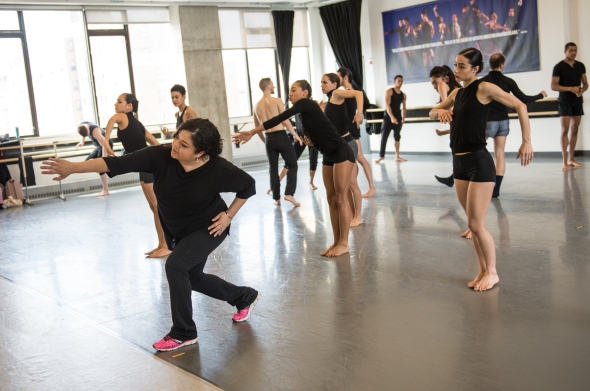
Michelle in rehearsal with the Company (c) Alona Cohen Photography
BH: Con Brazos Abiertos was originally developed in 2015 during Instituto Coreográfico, Ballet Hispánico’s choreographic lab. Since then, how has the work evolved, if at all?
Michelle Manzanales: After Instituto in 2015, it was kind of up in the air as to what would happen, if anything, with the ideas I had explored during the institute. However, my mind and heart were ignited with ideas of what would ultimately become Con Brazos Abiertos. I began thinking more deeply about the subjects I was touching on, identity and my cultural landscape. Since getting the good news that Con Brazos Abiertos would make its journey to the mainstage, I’ve been doing things like watching documentaries, discovering music, and trying to filter out what it is that I want to say through the work. I also had fun watching comedians like Cristela Alonzo, Gabriel Iglesias, and Cheech Marin and how they express their Latinidad through their art form of comedy.
BH: Tell us more about the kinds of documentaries, works, and other content were you looking at to help inform your work:
Manzanales: Hecho en Mexico is one documentary that has resonated with me. It takes you on a journey through Mexico using music as a vehicle, especially the music of contemporary Mexican music artists. The opening song of Con Brazos Abiertos, “Que Es Ahora?” is an excerpt from a song from this documentary. There are many other artists used in Hecho en Mexico that have been very inspirational to the work. It was also fun discovering other artists from different art forms expressing their own tellings of this Third Culture Kid experience.
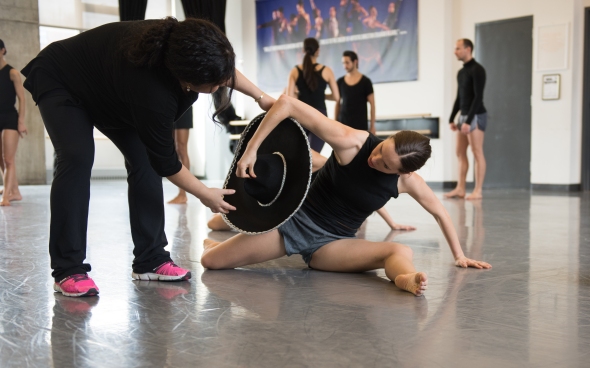
Michelle and Company dancer Diana Winfree (c) Alona Cohen Photography
BH: As an artist, had you always thought of exploring your Latino culture and identity choreographically?
Manzanales: No. Growing up in Texas—more importantly, growing up as a Mexican-American that lived in a culture of assimilation—celebrating one’s culture wasn’t something instilled in me. It’s not that my family had suppressed it, but it was something that they hadn’t emphasized. It’s not like what I experience today in contemporary culture where people celebrate their diverse heritage. Growing up for me was completely the opposite. People were celebrating what was mainstream and in the pop culture. That was how I was.
As a child, I knew that I was Mexican (obviously) but I didn’t really identify with being Mexican until much later as an adult. I think back to hanging out with my teenage friends, and how they would say pretty racist comments without pause. I don’t think that these comments were necessarily fully realized by those friends or even by me at the time. It would have an emotional, even physical effect on me. I didn’t fully process these feelings until much later in life, and it has been quite a journey of trying to sort this out.
“It was important for me to not only honor where my family comes from and my history, but to also honor where I am right now.”
Then as a dancer, dance became my safe space where I could be free as an artist to express myself. When I was leaving Houston to dance in Chicago, Mario Zambrano—a friend and choreographer—was setting a piece on us. He told me about Luna Negra Dance Theater, a company in Chicago. “Luna Negra explores Latino contemporary artists,” he said, “You should connect with them! You might find it interesting.” At the time, it was not what was interesting to me. It kind of felt like the way we’re perceived as Latino sometimes; in that somehow I felt less than something. Isn’t that terrible? But it’s how I felt.
I went to Luna Negra and started dancing with them and met Eduardo Vilaro, the company’s founder. I never connected with my culture so deeply until I met Eduardo, and it was the first time that I connected my culture with my art. First, it was about being a dancer and exploring that concept through dance. Then, it was about exploring the music and having conversations with my parents. It opened up from there.
I’ve choreographed a couple pieces for Eduardo, the first one being Sugar in the Raw in 2007. This was the first time I was pushed in this direction. In 2010, I choreographed an homage to Frida Kahlo in Paloma Querida, where I put ranchera and mariachi music into the piece. Whoever thought I would use ranchera music or mariachi music in a piece?! Michelle? She did that? Yes, I did! It was fascinating and exciting to see everyone’s reaction, the connections they made, and the conversations that followed. It was a very humbling and exciting moment for me.
Now, it’s ever present and I can’t shake it. With Con Brazos Abiertos, the process of revealing feels more natural and organic. Sugar was still a little concealed, the veil has slowly come down now. Today, it’s,“Here I am! I’m going to dance with a sombrero today!”
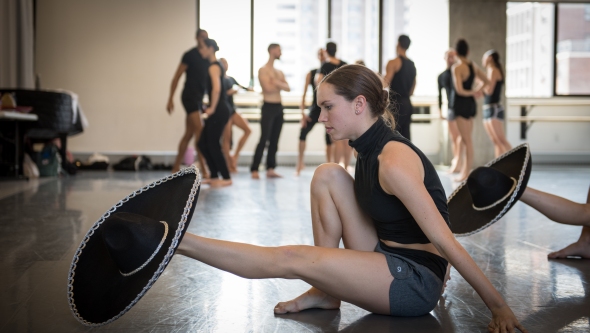
Diana Winfree in rehearsal for CON BRAZOS ABIERTOS (c) Alona Cohen Photography
BH: You’ve been working for Eduardo for a while—as a dancer, as an artistic collaborator. How has this working relationship with him helped evolve your artistic career?
Manzanales: When I danced for Luna Negra, Eduardo constantly asked me to think deeper and truly investigate themes within the work. He wants his dancers to understand what they’re dancing, and this is something that I brought to the table as the BH Company’s Rehearsal Director. You don’t just learn the steps, you embody them. You research videos and books as references and make connections to what it is that you’re expressing in a contemporary voice. It’s a responsibility that Eduardo has instilled in me and our dancers. I think that’s why we work well together. He trusts and knows that I’m going to honor and respect the choreographer’s voice because it is important to hear their story. I don’t know if I could set Con Brazos on a company other than Ballet Hispánico because I don’t know that it would be upheld with this same integrity.
“The veil has slowly come down now. Today, it’s,“Here I am! I’m going to dance with a sombrero today!”
BH: What do you hope people take away from this Con Brazos Abiertos, when it premieres in a couple weeks?
Con Brazos is a piece about exploring identity. It was important for me to not only honor where my family comes from and my history, but to also honor where I am right now. Most everyone in the US is an immigrant, and there are these splintered cultural backgrounds everywhere. And so now, everyone is having this experience of figuring out, “Who am I?” This conversation is so important, especially in today’s climate, where so many Americans are being attacked for who they are. The awareness, the celebration, and discovery of knowing yourself–I’m constantly asking questions about who I am. As a kid, heritage and culture seems like something you’re born into and that you don’t think is very impressive or amazing, but it really is.
Catch the World Premiere of Con Brazos Abiertos during the Company’s New York Season at the Joyce Theater, April 18-23. Tickets and details: http://bit.ly/2mmLwNd
Meet the Dancer: Jenna Marie
Posted: March 15, 2017 Filed under: Behind-the-Scenes @ BH, Dancers, The Joyce | Tags: Ballet Hispanico, Jenna Marie, The Joyce Theater Leave a commentWe took a moment to catch up with one of our newest Ballet Hispánico Company dancers for the 16-17 season: Jenna Marie! Get to know more about her below, and what her reaction was when she found it she was joining Ballet Hispánico….
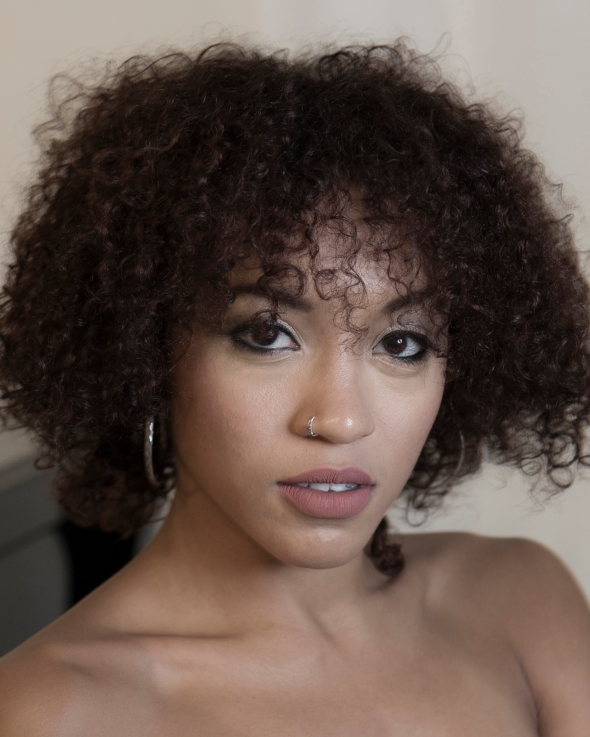
Jenna Marie (c) Mario Ismael Espinoza
Name: Jenna Marie
Age: 24
Hometown: Philadelphia, PA
How long you’ve been living in NYC: 5 years
What’s your favorite food? pasta, rice and beans, mochi
When you’re not dancing, you are… Traveling! I love to travel and explore new places!
Your reaction when you heard you got into the company?
I was in shock and I just remember crying and feeling a huge weight lifted from my shoulders. I finally found a home.

Jenna Marie in FLABBERGAST (c) Paula Lobo
In one word, what does ‘dance’ mean to you? Limitless
Ballet Hispánico has a unique cultural lens as an artistic organization–tell us more about why that appeals to you:
As a professional dancer of Puerto Rican descent it is appealing to be able to grow and learn more about all Latino influences. Growing up with a multicultural background, I wasn’t always able to explore my Latino culture. Ballet Hispánico has given me the opportunity to get back to my roots and learn what it means to be a Latina in today’s world.
What company repertory piece have you always wanted to learn/are you looking forward to learning?
I am a huge fan of Pedro Ruiz’s work and choreography. It has always been a pleasure watching Club Havana. It’s quite the classic and when we got to learn a snippet during the audition I was so excited. His work just always feels good!
“Growing up with a multicultural background, I wasn’t always able to explore my Latino culture. Ballet Hispánico has given me the opportunity to get back to my roots and learn what it means to be a Latina in today’s world.”

Jenna Marie in DANZÓN (c) Paula Lobo
Now that you’ve all spent a lot of time with the Company dancers–how would you describe their dynamic both on and off the stage?
Ballet Hispánico is by far the most welcoming group of talented and beautiful artists I have had the pleasure to come across. Not only are they gorgeous on stage but they are all humble, willing and so generous off the marley. It has truly been so inspiring to be accepted into this organization with open and loving arms. I couldn’t have asked for a better group of people to grow with!
Catch Jenna and the rest of the Company on stage during our NY Season at the Joyce Theater, April 18-23! Tickets and details: http://bit.ly/2mmLwNd
CONVERSACIONES: GUSTAVO RAMÍREZ SANSANO & Flabbergast
Posted: November 16, 2016 Filed under: Behind-the-Scenes @ BH, Performances, The Apollo | Tags: Ballet Hispanico, Flabbergast, Gustavo Ramírez Sansano, The Apollo Theater Leave a commentCelebrating over 45 years in bringing audiences and communities together to celebrate and explore the ever-changing diversity of Latino cultures, Ballet Hispánico returns to the Apollo Theater November 18-19, 2016 with Reshape / Reverse / Replay. A trio of works by Belgo-Colombian Annabelle Lopez Ochoa (Línea Recta, World Premiere), Spaniard Gustavo Ramírez Sansano (Flabbergast) and Ballet Hispánico’s Cuban-American Artistic Director Eduardo Vilaro (Danzón) draw upon the innovation and versatility of one of the world’s premier dance companies to capture contemporary Latino culture through movement.
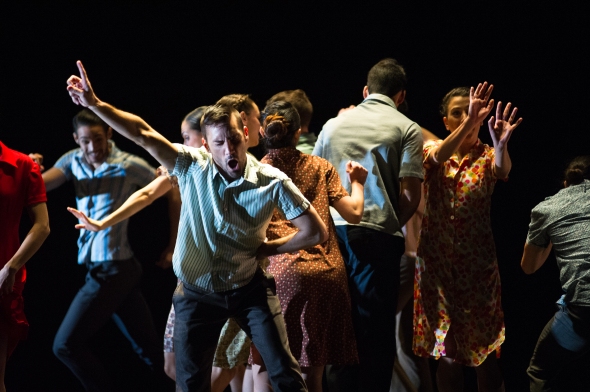
Johan Rivera Mendez in FLABBERGAST (c) Paula Lobo
We caught up with choreographer Gustavo Ramírez Sansano to discuss his inspiration behind his fast-moving, colorful and spirited work, Flabbergast. Ramírez Sansano is no stranger to Ballet Hispánico and has numerous works with the main company, including CARMEN.maquia (2012). Ramírez Sansano is the recipient of several awards and distinctions and has quickly established himself as a standout choreographic voice among New York audiences.
Flabbergast draws from Ramírez Sansano’s own personal experiences coming to the United States for the first time. Set to the music of Juan García Esquivel, Ramírez Sansano exposes with humor our stereotypes and preconceived ideas about new and foreign places.
How did the idea for Flabbergast come about? What influences drive the piece from concept to performance?
GUSTAVO RAMÍREZ SANSANO: Before I choreographed Flabbergast, I tried to get away from my culture. I grew up in Spain, and wanted to leave the country to see other things. So I went to Chicago, and it was there that I met Eduardo Vilaro, who had been the Artistic Director of Luna Negra Dance Theater. Eduardo had asked me: “Would you like to check out your heritage?” [For me], it was weird that somebody would ask a question like that! In a way, Eduardo provided a space for me to explore this side of myself. I remember one of the first things my mother had choreographed for me was set to the bayón—and I thought that this could be a connection for Flabbergast.
Have you returned to those same themes in other works which you’ve choreographed? And why?
RAMÍREZ SANSANO: Through Flabbergast, Eduardo opened a door that I didn’t—at that time—want to open. My Spanish heritage is a part of who I am. All of my pieces, whether they have a clear or unclear message about being Latino, reflect who I am. After all, it’s me choreographing, and I am a Latino person! In Flabbergast, it is obvious how my heritage has influenced my work. Sometimes, I am asked by others about the movement of the work. I am inspired by how my culture moves. It may not be in a typical way; maybe not in an obvious way.
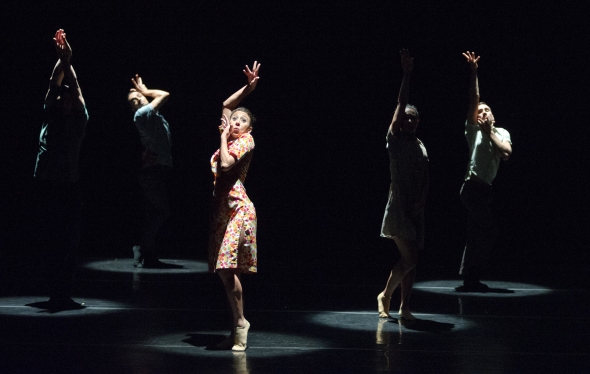
Martina Calcagno in FLABBERGAST (c) Paula Lobo
Flabbergast was originally commissioned in 2001 by Chicago’s Luna Negra Dance Theater, and has since been expanded and refined from its original version. In what ways has Flabbergast developed since its debut?
RAMÍREZ SANSANO: I believe Luna Negra had been in its second season. Flabbergast had developed around the first six-months into the season. I was one of the first guest choreographers at that time. A year later, Eduardo invited me back to make the piece a bit longer—over nine minutes. I had more time, and added the scene “Mucho/Muchacha”.
Then in Europe, a company had asked me to create a 20 minute piece around the music of Juan García Esquivel. I added two additional pieces which include sounds from 1950 and 60s movies. In that way, I thought the piece felt finished.
Flabbergast seems to reflect all those influences, and also started at a particular point in your life as an artist. I’m wondering that over time, has your piece begun to reflect how you feel about yourself, your heritage, your culture?
RAMÍREZ SANSANO: I have changed since then. A work can continue to change all of your life because it has to do with your tastes and who you are in that [given] moment. All of my pieces capture a moment in time….A moment in time which you’ve created for some really specific reason.
Whenever you resist an old work—and because you have seen it progress over time—you will always see differences. It’s because you have moved on from that [moment]. It’s like going to Paris with someone, and you’re walking, and you feel beautiful in that moment…that is the moment! Maybe you go back three years later, but you will not feel that same way.
I realize that [my] works were meant to be in the moment where they are from. If I want to do something, I will do it now; something that is more me right now. Flabbergast was me in the past, and that’s the beauty of it. Each thing has its own time. I realize I should not change anything from this piece to preserve the feelings that were there.
This is the third work of yours that Ballet Hispánico has presented in New York. What makes Ballet Hispánico a good match for your choreography?
RAMÍREZ SANSANO: I’ve worked closely with Eduardo—he and I are friends. I know what Ballet Hispánico is looking for and who we are trying to reach. In that way, I understand what the company was looking for, and what Eduardo wanted to convey.
I think the Company and I are a good match because we have known each other for a long time.
Which choreographers have inspired you the most? What are some of the greatest things you’ve learned from them?
RAMÍREZ SANSANO: I’ve been inspired by choreographers who I’ve been lucky to work closely with. But for me, it’s not just about that.
Choreographers, dancers, colleagues who I used to dance with (especially dancers! You can propose anything to a dancer and they will show you the way). Everything in general: people on the subway, my family and friends; how they walk and talk; how they move their hands. People that I hate. People that I love. All of them are a part of my inspiration.They open a door when you least expect it.
When I was on a train in Madrid, I watched the people around me. They quickly moved their hands when they talked. Even though I couldn’t make out what they were saying, I could understand just by the way the person moved—how their hands and body moved.
My pieces are from the world…and for the world.
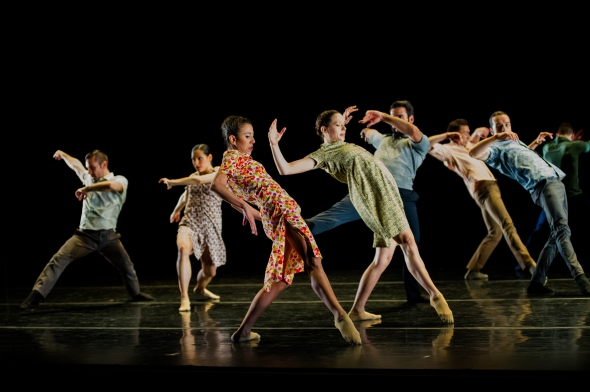
Gustavo Ramírez Sansano’s FLABBERGAST (c) Paula Lobo
—————
BALLET HISPÁNICO
The Apollo Theater, 253 West 125th Street, NYC
November 18-19, 2016 at 8pm
Tickets start at $35 and are available for purchase in person at The Apollo Theater, by phone at 1-800-745-3000, or online at BalletHispanico.org
A Message from Eduardo Vilaro
Posted: November 15, 2016 Filed under: Eduardo Vilaro, Performances, The Apollo | Tags: Annabelle Lopez Ochoa, Ballet Hispanico, Eduardo Vilaro, Gustavo Ramírez Sansano, The Apollo Theater Leave a comment
Lyvan Verdecia and Melissa Fernandez (c) Paula Lobo
Without a doubt, 2016 has been a trying year, and this past week especially reminds me of the importance of the work we do to support voices of color and gender in our curation. Long-term relationships with artists have been a hallmark of this company since Tina Ramirez’s founding. It continues to be an important value as we still struggle for recognition, equity, and visibility.
In order to change the cultural and critical lens, it is crucial to focus on those choreographers creating works that reshape, reverse, and at times, replay the essence of our culture. Artists such as Annabelle Lopez Ochoa, who has developed into a much sought-after choreographer in both the ballet and contemporary worlds of dance, or Gustavo Ramirez Sansano, another prodigious choreographer who continues to astound audiences with his masterful humor and humanity, are among that group.
“It is crucial to focus on those choreographers creating works that reshape, reverse, and at times, replay the essence of our culture.”
I have known and worked with these fine artists for over a decade and am honored to continue bringing their voices–different voices–to our audiences. This weekend, please join us at the Apollo Theater in coming together in the name of art, and unity.

Eduardo Vilaro
Artistic Director & CEO
Ballet Hispánico en Familia: BHdos, the second company
Posted: April 9, 2016 Filed under: Behind-the-Scenes @ BH, BHdos, Dancers, Education & Outreach, Performances, The Joyce | Tags: Ballet Hispanico en Familia, BHdos, The Joyce Theater 1 CommentDid you know? In addition to receiving specialized dance training, the talented young dancers of second company BHdos have opportunities to perform on the mainstage for our wider audiences. After a successful run at the Apollo Theater this past fall, they’re sharing the stage with the main company again for the En Familia program of the company’s 45th Anniversary Season at the Joyce Theater.

BHdos dancers with Ballet Hispanico’s Artistic Director, Eduardo Vilaro, at the Joyce Theater!
We decided to catch up with some of our second company dancers to get more insight into their experiences performing as part of BHdos:
You get to perform company works for our youngest fans year-round, which can be a very different experience from performing for adult audiences. What’s one thing that surprised you about dancing for younger fans?
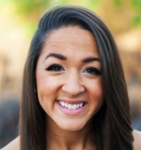 STEFANIE ROPER: The commentary they make throughout the dance–we can hear little comments on stage when we’re performing. It is so fun to hear their simple remarks from what they see, and their screams and applause are always THE BEST. They make you feel like you’re a celebrity!
STEFANIE ROPER: The commentary they make throughout the dance–we can hear little comments on stage when we’re performing. It is so fun to hear their simple remarks from what they see, and their screams and applause are always THE BEST. They make you feel like you’re a celebrity!

NICOLE NERUP: I was pleasantly surprised and overjoyed to discover how enthusiastic the younger fans are about dance! I swear I have felt the closest I will ever feel to being Taylor Swift or the “Queen of Salsa” herself, Celia Cruz, at our performances for young people.
 ASHLEY ANDUIZA: I am constantly surprised by how much detail our younger fans observe. Their curiosity and questions excite me and open another perspective that I enjoy exploring and that are just as valid as any others.
ASHLEY ANDUIZA: I am constantly surprised by how much detail our younger fans observe. Their curiosity and questions excite me and open another perspective that I enjoy exploring and that are just as valid as any others.
What motivates you to dance?
 NICK FEARON: The thrill of being on stage is what keeps me going, and so is my mom. She has worked so hard for me to be where I am today that all I want to do is be the best dancer I can be for myself and also for her.
NICK FEARON: The thrill of being on stage is what keeps me going, and so is my mom. She has worked so hard for me to be where I am today that all I want to do is be the best dancer I can be for myself and also for her.
 CHRISTOPHER R. WILSON: My motivation to dance stems from the sheer fact that I know I wouldn’t be happy doing anything else!
CHRISTOPHER R. WILSON: My motivation to dance stems from the sheer fact that I know I wouldn’t be happy doing anything else!
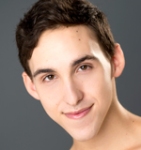 IOSU BASCARAN: Getting to learn new choreography and also getting to work with an incredibly talented and motivated group of dancers!
IOSU BASCARAN: Getting to learn new choreography and also getting to work with an incredibly talented and motivated group of dancers!
What’s it like sharing the stage with the main company dancers?
 CRISS RODRIGUEZ: Just having them around is inspiring and a boost of confidence and joy. To have their help is great. Makes me feel like a part of the family, always trying to find ways to improve. It’s a great feeling of energy. They are always looking out for each other, which is amazing.
CRISS RODRIGUEZ: Just having them around is inspiring and a boost of confidence and joy. To have their help is great. Makes me feel like a part of the family, always trying to find ways to improve. It’s a great feeling of energy. They are always looking out for each other, which is amazing.
ASHLEY: Being able to see, hear and even work together through certain steps with company members that have performed the same roles in the past gives us such valuable information that enhances our experience and delivery.
STEFANIE: I can feel their energy and support in dancing as a group! I know that we all support each other and want all of us to succeed–that is rare. The main company dancers are so approachable and they always have great tips and tricks how to accent or fulfill certain movement that you are struggling with.
What’s the best question you’ve heard during a Q&A?
IOSU: How do you change costumes so fast?
STEFANIE: Why are you all so pretty?
NICK: The best question I’ve heard would have to be when a kid asked me about my hair and who cuts it. It was a great plug for my hairdresser Richard.
Any pre-show rituals or lucky charms?
 HANNAH JEW: I like to do my four minute plank series and eat a banana and drink a bottle of Gatorade. I also have some cards with encouraging words from my mentor that I keep in my makeup box.
HANNAH JEW: I like to do my four minute plank series and eat a banana and drink a bottle of Gatorade. I also have some cards with encouraging words from my mentor that I keep in my makeup box.
NICK: While I’m waiting in the wings I have to shake out my whole body and pop my toe knuckles.
NICOLE: Before every show I always do the same pre-class warm up that I have been doing every day for the past 4 years. Sometimes I shorten or vary it, but the elements are the same. This ritual not only prepares my body but also centers me–reminding of my younger self, how much I have grown, and why I love what I do.
CHRISTOPHER: I listen to a playlist I created called “Let’s Werk.”
If you weren’t a dancer, you would be a:
HANNAH: Gifted education specialist in a school system.
STEFANIE: School teacher or a full-time mom.
CHRISTOPHER: Finance/marketing advisor of an arts organization.
IOSU: I’m currently studying finance and mathematics, so possibly something having to do with that.
NICOLE: Writer, choreographer, or lawyer.
CRISS: Veterinarian, or marine biologist.
NICK: Wildlife veterinarian.
ASHLEY: Veterinarian! My career has never come close to going down this path but I believe that my passion for nurturing animals runs at the same level as my passion for dance.
Merde to our dancers on their Joyce Theater debut! Get a taste of the Ballet Hispanico En Familia experience in this video below:
Catching up with the Company: Eila Valls
Posted: March 31, 2016 Filed under: Behind-the-Scenes @ BH, Dancers, Performances, The Joyce | Tags: Ballet Hispanico, Bury Me Standing, Eila Valls Leave a comment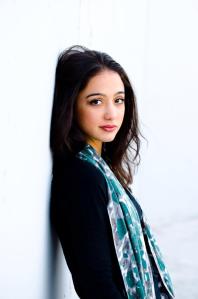
Eila Valls (c) Mario Ismael Espinoza
Name: Eila Valls
Age: 24
Hometown: Gandia (Valencia), Spain
What are you most looking forward to about this Joyce season?
This will be my first season both at the Joyce and with Ballet Hispanico and it’s a special moment for me. I’m really looking forward to sharing my art with everyone whose support and love for dance have helped me be where I am now.
What motivates you to dance?
The immense feeling of freedom I experience every time I get to reinvent myself to become a new character in a piece. That, and the strong connections we share everyday in rehearsals and even more in performances.
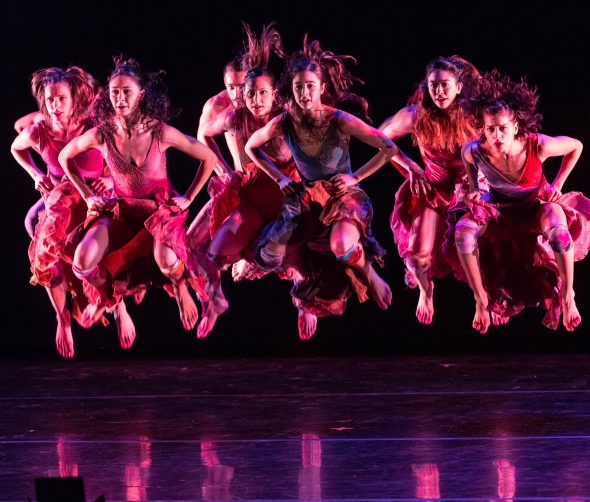
BURY ME STANDING by Ramón Oller (c) Bicking Photography
If you could describe BURY ME STANDING in one word, what would it be and why?
Passion. This piece is a portrait of the gypsies. It opens a window to their intense traditions, feelings, and culture.
“I always make sure I hug my partners for a little while before going on stage. It’s an exchange of energy, like a way of saying I trust you, we’re together in this.”
Do you have any pre or post-performance rituals? Lucky charms?
I always make sure I hug my partners for a little while before going on stage. It’s an exchange of energy, like a way of saying I trust you, we’re together in this. The whole company also makes a circle of energy on stage, and finishes by kissing the stage floor a few minutes before the show starts.
Think back to your first day (ever) with the Ballet Hispanico company. How’d you feel? How do you feel now?
I felt so grateful, inspired and welcome, it was a dream come true. The great thing is that I still feel the same excitement of the first day, every time I go to rehearsal, but without the uncontrollable nerves…
If you weren’t a dancer, you would be a:
Psychologist.

Eila in rehearsal (c) Madeline Campisano
Catch Eila on stage at the Joyce Theater during our 45th Anniversary Season April 5-10! More info here: bit.ly/1kG2Kfu
Catching up With the Company: Melissa Fernandez
Posted: March 28, 2016 Filed under: Behind-the-Scenes @ BH, Dancers, Performances, The Joyce | Tags: Ballet Hispanico, Club Havana, Melissa Fernandez, Pedro Ruiz Leave a comment
Melissa Fernandez (c) Paula Lobo
Name: Melissa Fernandez
Age: 26
Hometown: Miami, Florida
What are you most looking forward to about this Joyce season?
I’m looking forward to managing the various roles and characters that I have to portray. This season, the pieces being presented are incredibly diverse in both theme and genre and that challenge excites me as an artist. Developing and cultivating a character in rehearsal and then onstage is a magical experience.
Who’s your biggest dance fan?
Hands down: my mother. She has been beside from the very first moment and I appreciate her constructive criticism even though by no means is she a ” dance mom.”
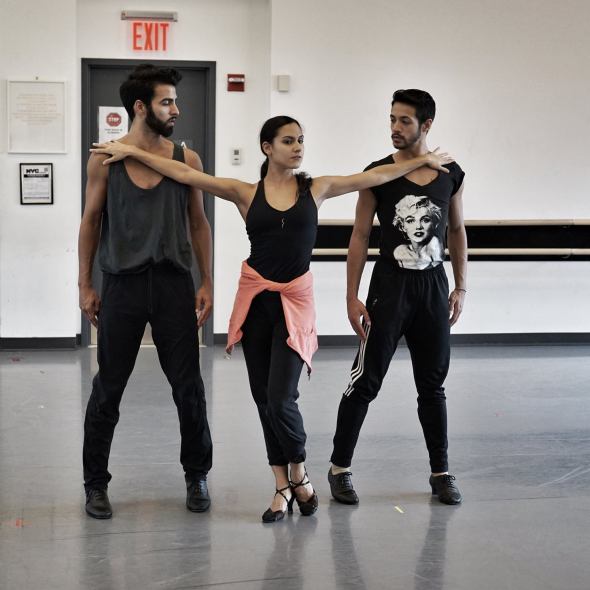
Melissa in rehearsal for Pedro Ruiz’s CLUB HAVANA © Jackeline Montalvo
If you could describe CLUB HAVANA in one word, what would it be and why?
Seduction. Partially because of the character I play but also because as a Cuban American, all that has to do with our culture is purely seductive. Whether it’s the Cuban rhythms or sensuous moves–they all lure you in and seduce you in a very elegant yet sensual way.
“Developing and cultivating a character in rehearsal and then onstage is a magical experience.”
Do you have any pre or post-performance rituals? Lucky charms?
Aside from the typical warm up exercises and the energy filled company group circle, I like to pray in private for my fellow artists so that we may have an incredible performance.
Think back to your first day (ever) with the Ballet Hispanico company. How’d you feel? How do you feel now?
Wow, day one! That was 4 years ago and I remember being terrified and thrilled all at once. It was my very first professional job as a dancer right out of college and I was the youngest dancer as an apprentice. Nowadays I’m one of the oldest and I feel a great pride for this organization–a kind of respect and pride that takes maturity and years of lessons and moments of hardship and success. Ballet Hispanico has been and I believe will be one of the most brilliant and fulfilling parts of my professional and personal life.
If you weren’t a dancer, you would be a:
A doctor, a journalist or a dolphin trainer.
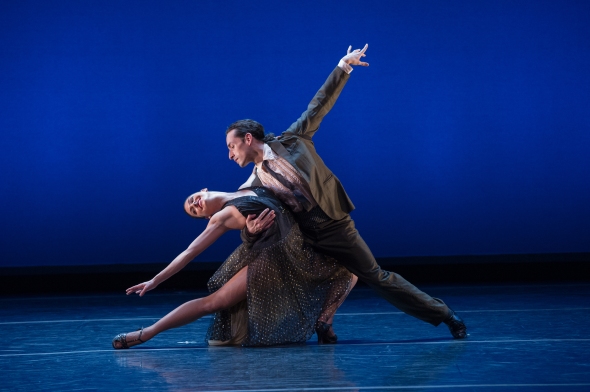
Melissa in CLUB HAVANA. We’re pretty glad she didn’t pick dolphin training! © Paula Lobo
Catch Melissa on stage at the Joyce Theater during our 45th Anniversary Season April 5-10! More info here: bit.ly/1kG2Kfu
Ballet Hispanico Unveils a New Look
Posted: February 10, 2016 Filed under: Behind-the-Scenes @ BH, News | Tags: Ballet Hispanico, Eduardo Vilaro, Phil Colon, Project 2050 Leave a commentBallet Hispanico is proud to celebrate 45 years of sharing and reflecting the diversity of Latino cultures with the launch of a new brand that will propel the organization into its next 45 years.
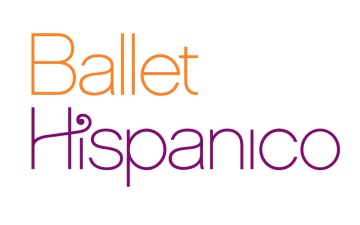
Previous brand
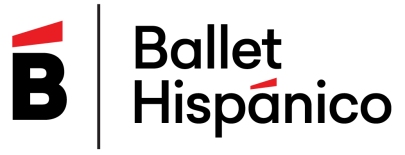
New brand
Artistic Director & CEO Eduardo Vilaro, who brought a fiercely contemporary aesthetic to the organization six years ago, sought a design that embodies the bold, inspiring and uniquely Latino qualities that characterize Ballet Hispanico’s professional dance company, School of Dance and community engagement programs.
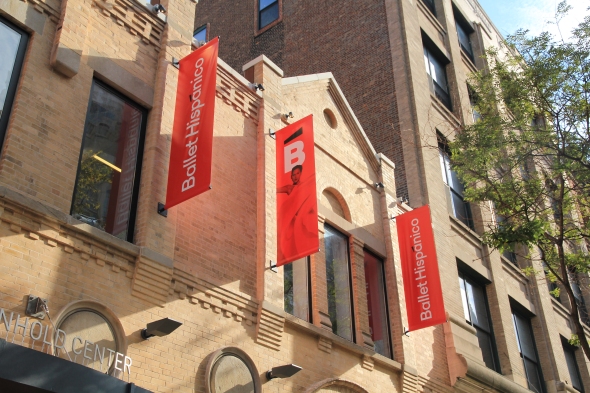
Banners displayed on Ballet Hispanico’s recently renovated facade. (c) Madeline Campisano
“Given the ever-increasing influence of Latinos on the cultural landscape of this country, it felt like the right time to re-introduce Ballet Hispanico as the new expression of American contemporary dance,” said Eduardo Vilaro. “Founder Tina Ramirez’s mission of celebrating the beauty of Latino culture through dance remains unchanged—but we now push every day to challenge, through our work, people’s notions of what it means to be Latino in 2016 and beyond. The new brand strikes a beautiful balance between honoring the organization’s roots and embracing our forward-thinking spirit.”
“The new brand strikes a beautiful balance between honoring the organization’s roots and embracing our forward-thinking spirit.”
Ballet Hispanico’s thanks go to branding firm Project 2050, led by its founder and Ballet Hispanico Board member Phil Colón along with designer Daniel Arenas, for capturing the future of Ballet Hispanico with their design; to the Board of Ballet Hispanico for their unwavering support; and to Ballet Hispanico’s marketing team for their key input.

Studio banner reflecting new look (c) Stephanie Naru
Please share your thoughts on our new look with the hashtag #45yearsnew!
Behind CARMEN.maquia: Kimberly Van Woesik as CARMEN
Posted: November 13, 2014 Filed under: Behind-the-Scenes @ BH, Dancers, Performances, The Apollo | Tags: CARMEN.maquia, Gustavo Ramírez Sansano, Kimberly Van Woesik 2 CommentsWe caught up with company dancer Kimberly Van Woesik, who will be dancing the role of Carmen in our upcoming NYC premiere of Gustavo Ramírez Sansano’s “CARMEN.maquia” at the Apollo Theater. Here’s what she had to say:
What was your reaction when you were cast as Carmen?
When I found out I would be playing the role of Carmen, I was extremely excited and humbled at the opportunity to take on the responsibility of a main character in this story. I feel very fortunate to have this experience be a milestone in my career as I’ve never done a full-length story ballet. I have always been enamored with Gustavo’s unique and athletic movement language; to be playing Carmen in his work is truly a dream come true. It has been the most fulfilling work I’ve ever done mentally, physically, and artistically.
How familiar were you with the classic story of Carmen before you started working on this piece?
I have never actually seen the story of Carmen performed live, as an opera or ballet, but only in online videos. I know that Carmen is a woman with a carefree, selfish attitude, who does what she wants when she wants. She always seems in control regardless of the circumstances she finds herself in. When I found out we would be doing this work by Gustavo I immediately went to YouTube to find a clip of it [premiered with Luna Negra Dance Theater in 2012], and was instantly captivated by how the nuances of his movement brought each character alive. Without words being used as in song, Gustavo tells the story of Carmen by marrying the choreographic movements to the qualities and intricacies of the music.
How did Gustavo prep you to get into character for CARMEN.maquia?
Each day Gustavo gives me more insight into who Carmen is. At first we learned movement and partnering, then put it to music, and then started working more on character development within each scene. What I appreciate most about Gustavo’s process is that he himself demonstrates a very clear idea of how to physically move in order to portray an emotion or state of being. When I see him do the movement with the intention he’s asking for, it’s so clear that I’m able to grow from what he has shown me. As a very visual learner, I watch him and study how he moves and use it as inspiration for my character. He also allows for my own personal qualities to come through. He encourages the dancers to not have to “act” or “show” the audience how we are feeling or what we are thinking, but to simply just be in the story with each other, interact with the people around you and respond. By having clear intentions with each other, the audience will be able to come into our world, instead of trying to show them a story.
“Carmen is a woman with a carefree, selfish attitude, who does what she wants when she wants.”
How is working on a story ballet different from the other works you’ve done for Ballet Hispanico?
Each work that we do with Ballet Hispanico always has a clear through line of what the intention of the piece is. With CARMEN.maquia we have a very in-depth story with complex, visceral characters. In an evening-length work we are challenged with having our characters evolve throughout the entire story, not just in a short 20 minute piece. Because we are used to doing shorter works, one of the biggest challenges for me is to not feel like I have to reveal all of who Carmen is right away. While the choreography clearly lends itself to do the storytelling, I have to let my internal dialogue constantly change throughout the work in order to reflect the emotion of what is happening in each scene, while still remaining authentic to the intention and clarity of the movement.
What do you hope to accomplish on stage at the Apollo the night of the NYC premiere?
At opening night at the Apollo I hope to create an intimate space on stage that allows the audience to be captivated by the world that Gustavo has created. I hope for the audience to feel and get lost in our story with us.
-Kimberly Van Woesik
Thanks for your insight, Kim! See Kim and the rest of the company retell the story of Carmen on the Apollo stage on Saturday, November 22. Click here for more details and follow us at #CarmenInHarlem on Facebook, Twitter, and Instagram.

